Grigoris Nikolaou
A Framework for Semantics-based Situational Awareness during Mobile Robot Deployments
Feb 19, 2025Abstract:Deployment of robots into hazardous environments typically involves a ``Human-Robot Teaming'' (HRT) paradigm, in which a human supervisor interacts with a remotely operating robot inside the hazardous zone. Situational Awareness (SA) is vital for enabling HRT, to support navigation, planning, and decision-making. This paper explores issues of higher-level ``semantic'' information and understanding in SA. In semi-autonomous, or variable-autonomy paradigms, different types of semantic information may be important, in different ways, for both the human operator and an autonomous agent controlling the robot. We propose a generalizable framework for acquiring and combining multiple modalities of semantic-level SA during remote deployments of mobile robots. We demonstrate the framework with an example application of search and rescue (SAR) in disaster response robotics. We propose a set of ``environment semantic indicators" that can reflect a variety of different types of semantic information, e.g. indicators of risk, or signs of human activity, as the robot encounters different scenes. Based on these indicators, we propose a metric to describe the overall situation of the environment called ``Situational Semantic Richness (SSR)". This metric combines multiple semantic indicators to summarise the overall situation. The SSR indicates if an information-rich and complex situation has been encountered, which may require advanced reasoning for robots and humans and hence the attention of the expert human operator. The framework is tested on a Jackal robot in a mock-up disaster response environment. Experimental results demonstrate that the proposed semantic indicators are sensitive to changes in different modalities of semantic information in different scenes, and the SSR metric reflects overall semantic changes in the situations encountered.
A Supervised Machine Learning Approach to Operator Intent Recognition for Teleoperated Mobile Robot Navigation
Apr 27, 2023Abstract:In applications that involve human-robot interaction (HRI), human-robot teaming (HRT), and cooperative human-machine systems, the inference of the human partner's intent is of critical importance. This paper presents a method for the inference of the human operator's navigational intent, in the context of mobile robots that provide full or partial (e.g., shared control) teleoperation. We propose the Machine Learning Operator Intent Inference (MLOII) method, which a) processes spatial data collected by the robot's sensors; b) utilizes a supervised machine learning algorithm to estimate the operator's most probable navigational goal online. The proposed method's ability to reliably and efficiently infer the intent of the human operator is experimentally evaluated in realistically simulated exploration and remote inspection scenarios. The results in terms of accuracy and uncertainty indicate that the proposed method is comparable to another state-of-the-art method found in the literature.
A Hierarchical Variable Autonomy Mixed-Initiative Framework for Human-Robot Teaming in Mobile Robotics
Nov 25, 2022


Abstract:This paper presents a Mixed-Initiative (MI) framework for addressing the problem of control authority transfer between a remote human operator and an AI agent when cooperatively controlling a mobile robot. Our Hierarchical Expert-guided Mixed-Initiative Control Switcher (HierEMICS) leverages information on the human operator's state and intent. The control switching policies are based on a criticality hierarchy. An experimental evaluation was conducted in a high-fidelity simulated disaster response and remote inspection scenario, comparing HierEMICS with a state-of-the-art Expert-guided Mixed-Initiative Control Switcher (EMICS) in the context of mobile robot navigation. Results suggest that HierEMICS reduces conflicts for control between the human and the AI agent, which is a fundamental challenge in both the MI control paradigm and also in the related shared control paradigm. Additionally, we provide statistically significant evidence of improved, navigational safety (i.e., fewer collisions), LOA switching efficiency, and conflict for control reduction.
Robot-Assisted Nuclear Disaster Response: Report and Insights from a Field Exercise
Jul 01, 2022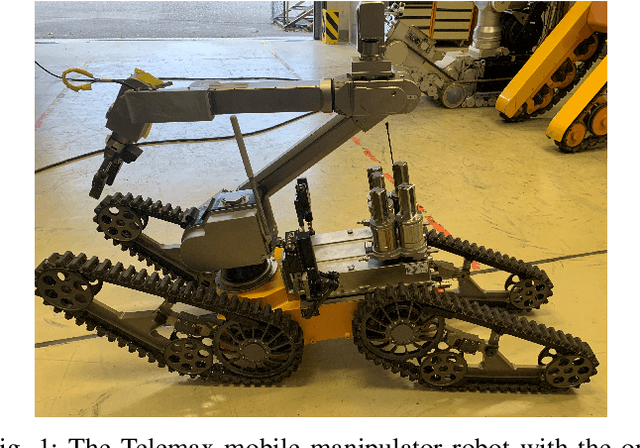
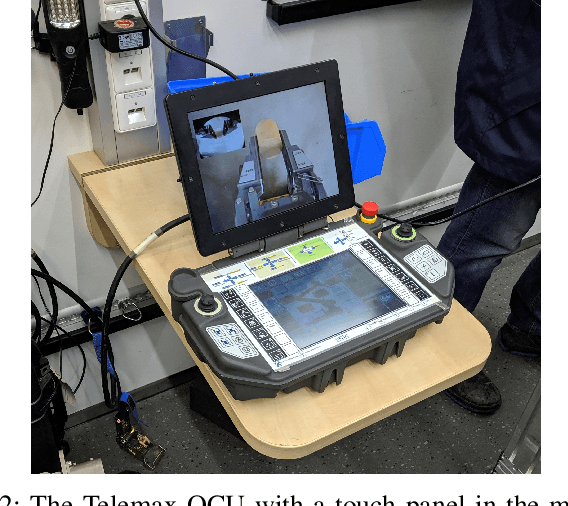

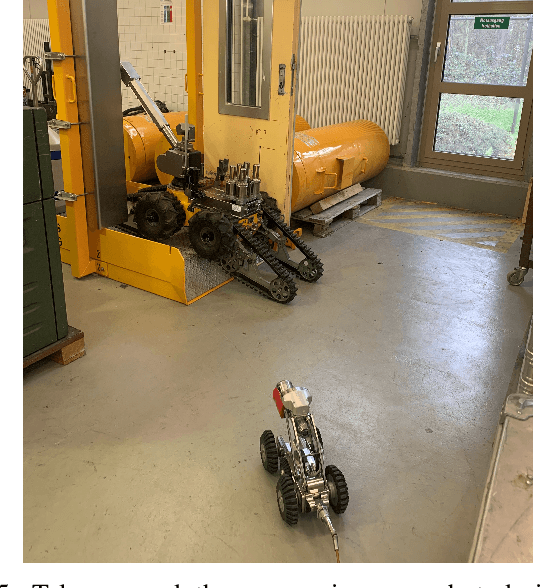
Abstract:This paper reports on insights by robotics researchers that participated in a 5-day robot-assisted nuclear disaster response field exercise conducted by Kerntechnische Hilfdienst GmbH (KHG) in Karlsruhe, Germany. The German nuclear industry established KHG to provide a robot-assisted emergency response capability for nuclear accidents. We present a systematic description of the equipment used; the robot operators' training program; the field exercise and robot tasks; and the protocols followed during the exercise. Additionally, we provide insights and suggestions for advancing disaster response robotics based on these observations. Specifically, the main degradation in performance comes from the cognitive and attentional demands on the operator. Furthermore, robotic platforms and modules should aim to be robust and reliable in addition to their ease of use. Last, as emergency response stakeholders are often skeptical about using autonomous systems, we suggest adopting a variable autonomy paradigm to integrate autonomous robotic capabilities with the human-in-the-loop gradually. This middle ground between teleoperation and autonomy can increase end-user acceptance while directly alleviating some of the operator's robot control burden and maintaining the resilience of the human-in-the-loop.
Fessonia: a Method for Real-Time Estimation of Human Operator Workload Using Behavioural Entropy
Oct 05, 2021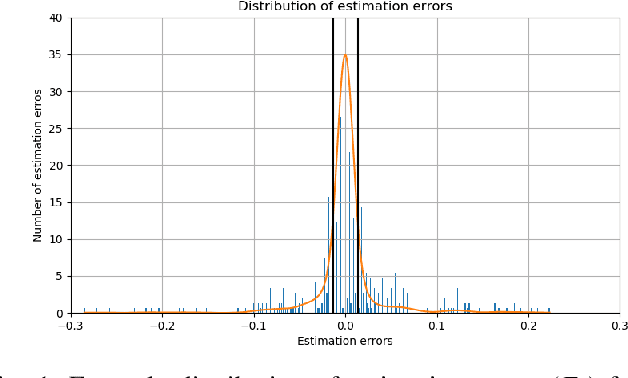


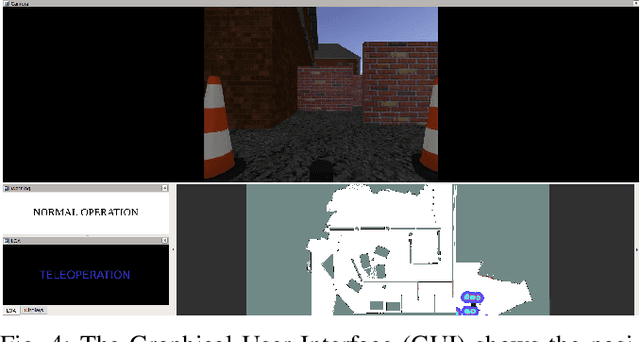
Abstract:This paper addresses the problem of the human operator cognitive workload estimation while controlling a robot. Being capable of assessing, in real-time, the operator's workload could help prevent calamitous events from occurring. This workload estimation could enable an AI to make informed decisions to assist or advise the operator, in an advanced human-robot interaction framework. We propose a method, named Fessonia, for real-time cognitive workload estimation from multiple parameters of an operator's driving behaviour via the use of behavioural entropy. Fessonia is comprised of: a method to calculate the entropy (i.e. unpredictability) of the operator driving behaviour profile; the Driver Profile Update algorithm which adapts the entropy calculations to the evolving driving profile of individual operators; and a Warning And Indication System that uses workload estimations to issue advice to the operator. Fessonia is evaluated in a robot teleoperation scenario that incorporated cognitively demanding secondary tasks to induce varying degrees of workload. The results demonstrate the ability of Fessonia to estimate different levels of imposed workload. Additionally, it is demonstrated that our approach is able to detect and adapt to the evolving driving profile of the different operators. Lastly, based on data obtained, a decrease in entropy is observed when a warning indication is issued, suggesting a more attentive approach focused on the primary navigation task.
A Bayesian-Based Approach to Human Operator Intent Recognition in Remote Mobile Robot Navigation
Sep 24, 2021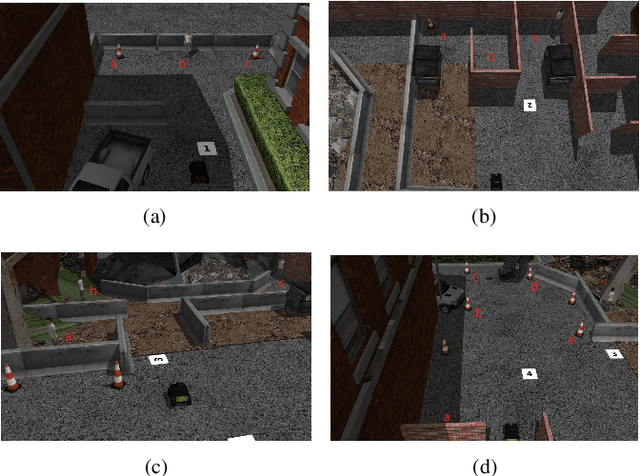
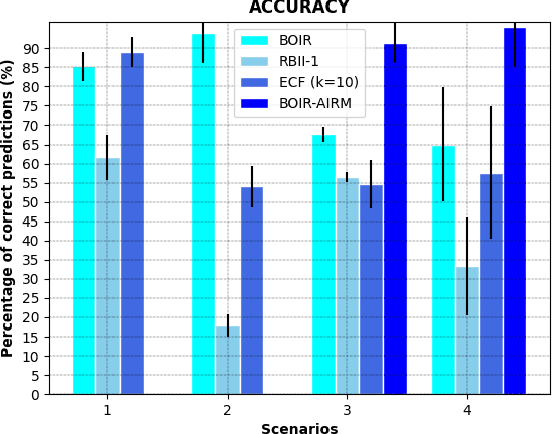
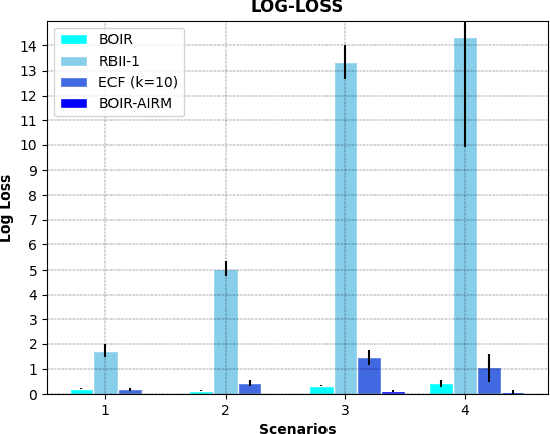
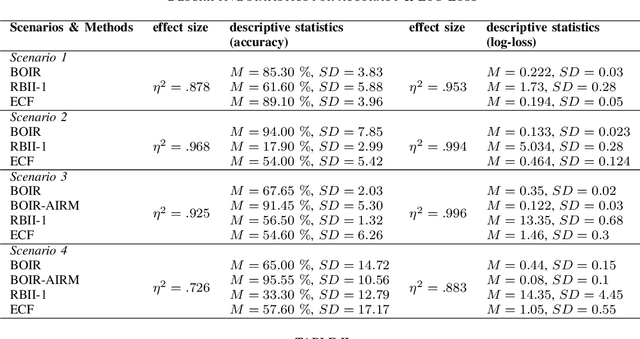
Abstract:This paper addresses the problem of human operator intent recognition during teleoperated robot navigation. In this context, recognition of the operator's intended navigational goal, could enable an artificial intelligence (AI) agent to assist the operator in an advanced human-robot interaction framework. We propose a Bayesian Operator Intent Recognition (BOIR) probabilistic method that utilizes: (i) an observation model that fuses information as a weighting combination of multiple observation sources providing geometric information; (ii) a transition model that indicates the evolution of the state; and (iii) an action model, the Active Intent Recognition Model (AIRM), that enables the operator to communicate their explicit intent asynchronously. The proposed method is evaluated in an experiment where operators controlling a remote mobile robot are tasked with navigation and exploration under various scenarios with different map and obstacle layouts. Results demonstrate that BOIR outperforms two related methods from literature in terms of accuracy and uncertainty of the intent recognition.
Human operator cognitive availability aware Mixed-Initiative control
Aug 26, 2021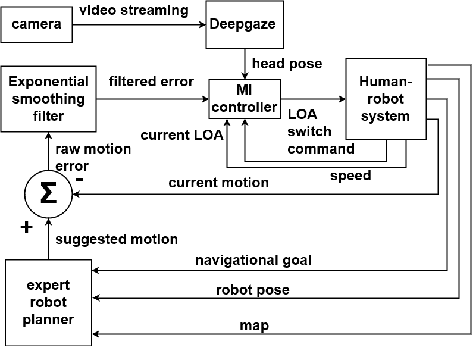
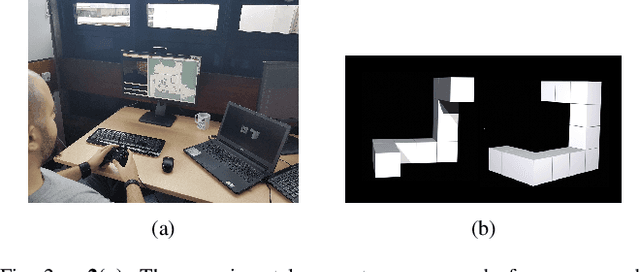
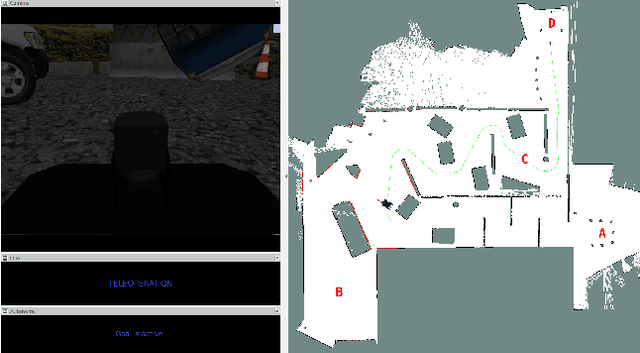
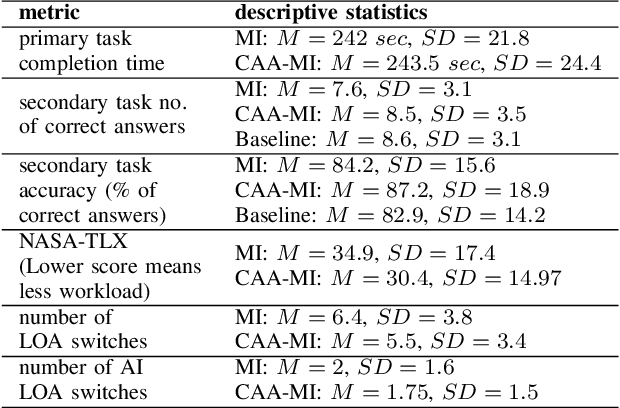
Abstract:This paper presents a Cognitive Availability Aware Mixed-Initiative Controller for remotely operated mobile robots. The controller enables dynamic switching between different levels of autonomy (LOA), initiated by either the AI or the human operator. The controller leverages a state-of-the-art computer vision method and an off-the-shelf web camera to infer the cognitive availability of the operator and inform the AI-initiated LOA switching. This constitutes a qualitative advancement over previous Mixed-Initiative (MI) controllers. The controller is evaluated in a disaster response experiment, in which human operators have to conduct an exploration task with a remote robot. MI systems are shown to effectively assist the operators, as demonstrated by quantitative and qualitative results in performance and workload. Additionally, some insights into the experimental difficulties of evaluating complex MI controllers are presented.
* 4 pages
VFH+ based shared control for remotely operated mobile robots
Nov 10, 2020



Abstract:This paper addresses the problem of safe and efficient navigation in remotely controlled robots operating in hazardous and unstructured environments; or conducting other remote robotic tasks. A shared control method is presented which blends the commands from a VFH+ obstacle avoidance navigation module with the teleoperation commands provided by an operator via a joypad. The presented approach offers several advantages such as flexibility allowing for a straightforward adaptation of the controller's behaviour and easy integration with variable autonomy systems; as well as the ability to cope with dynamic environments. The advantages of the presented controller are demonstrated by an experimental evaluation in a disaster response scenario. More specifically, presented evidence show a clear performance increase in terms of safety and task completion time compared to a pure teleoperation approach, as well as an ability to cope with previously unobserved obstacles.
 Add to Chrome
Add to Chrome Add to Firefox
Add to Firefox Add to Edge
Add to Edge